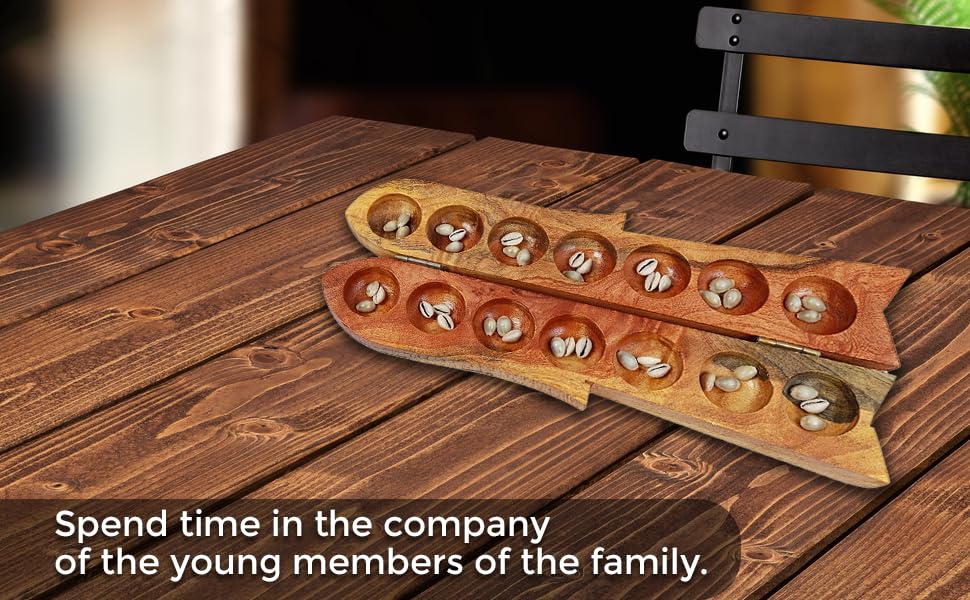Santhi Metal eShop
Handicrafts Vamana Guntalu / Pallanguzhi / Passuppandi / Mancala Wooden Board Game with 70 Cowrie Shells - 14 Pits
Handicrafts Vamana Guntalu / Pallanguzhi / Passuppandi / Mancala Wooden Board Game with 70 Cowrie Shells - 14 Pits
Couldn't load pickup availability
This game is encouraged for the kids to learn to count, to improve eye–hand coordination and concentration while playing
The game is played by two players, with a wooden board that has fourteen pits, one among them being seven pits on each player's side. The pits contain cowry shells
The main and foremost objective of pallanguli is to collect more pebbles than the opponent. The stones or pebbles are put on the both sides of the board. The player who plays their turn first, picks the seeds from any of their respective pits.
It is an indoor game, played by two people. It is a strategic game with skilful moves and memory about the position and number of coins kept in the opponent's pit. Game board has 14 pits. Benefits: Enhances coordination, memory, observation skills, maths and motor skills.
Materials
Materials
Wood
Shipping & Returns
Shipping & Returns
All products are available for delivery across India, along with a 7-day return policy
Dimensions
Dimensions
L x B x H - 43.1 x 9.1 x 6.8 cm
Weight
Weight
Maintenance & care :
Maintenance & care :









Pallanguzhi - Passuppandi








